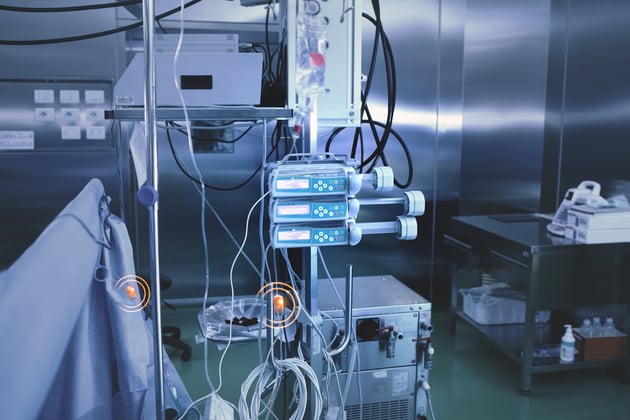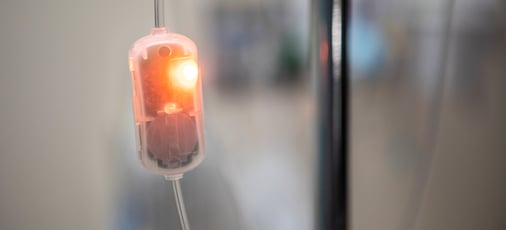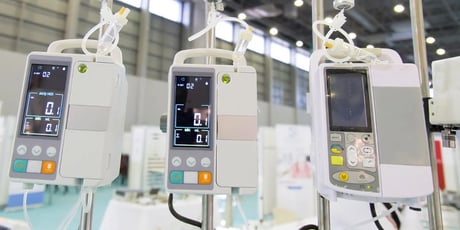MedLite ID: An Innovation Reducing Infusion Confusion
While America’s healthcare system is no stranger to criticism and you likely already know about its...

New Published Study Shows MedLite ID as Faster and Simpler Solution to Primary Medication Infusion Line Identification
Published in the Journal of Infusion Nursing, the peer-reviewed article finds that the MedLite ID Smart-Lite solution significantly improves IV line identification and tracing for bedside nurses
Saint George, UT– November 20, 2024 – A new peer-reviewed article in the Journal of Infusion Nursing (JIN), the official publication of the Infusion Nurses Society (INS), provided statistically significant evidence that the MedLite ID Smart-Lite system was faster to access the primary medication line injection port and quantified as less mentally tasking. Sponsored by Orion Innovations and conducted at the Wake Forest University School of Medicine, the study represents a significant evidence-based milestone for MedLite ID, which identifies and illuminates the intermittent drug Keep Vein Open (KVO) infusion line in seconds and is designed to prevent hospital wrong-route infusion line-tracing errors known as Adverse Drug Events (ADEs). MedLite ID, an eight-time patented innovation, attaches to any commonly used hospital IV line in seconds, which provides a simple standardization method of infusion line identification and tracing – one of the most commonly done procedures by hospital nurses.
The study investigated the use of light-linking infusion devices (MedLite ID) compared to standard labeling practices (SLP) in critical care settings – specifically focusing on task load, time to access the medication injection port, error rate, system usability, and the impact of lighting and nurse fatigue. The research was conducted at the high-fidelity simulation suite at Wake Forest University School of Medicine with experienced intensive care unit (ICU) nurses. These new findings build on earlier research on light-linking solutions to improve infusion patient safety, which can be found in an article entitled “Untangling Infusion Confusion: A Comparative Evaluation of Interventions in a Simulated Intensive Care Setting” (Crit Care Med. 2019 Jun 14).
Each ICU nurse participating in the study performed four randomly assigned simulations, in low-light and daylight conditions, using both MedLite’s device and standard labeling practices. The time to select the correct port for injection on the KVO line was documented as well as noting any simulated patient harm ADE events. Nurses recorded usability scores through the System Usability Scale (SUS), a ten-item scale allowing them to quantify complexity, consistency, and ease of use. Additionally, the fatigue levels of the nurses were assessed by the NASA Task Load (TLX) scale, a six-item workload scale that measures physical, mental, pace, effort, frustration, and performance. Ap value of < 0.05 was used for significance.
“The findings suggest that light-linking technologies, like MedLite ID, may contribute to improved safety and efficiency in critical care environments,” said Carolyn Huffman, Ph.D., assistant professor of implementation science at Wake Forest University School of Medicine “Additionally, this study underscores the value of collaboration between industry and nurse researchers in developing and evaluating bedside devices and products tailored for nursing practice.”
Of the eight simulated patient harm infusion ADE events, the study found that most of the errors (six out of eight) occurred in low-light conditions, which are common in ICU conditions. MedLite ID has zero errors in low-light conditions. Compared to standard of care, MedLite ID Smart-Lite system was 24 percent faster in accessing the primary medication line injection port and 40 percent less mental tasking as quantified within the study. Fatigue played a role in perceptions of usability, as the more fatigued a nurse was, the easier they found MedLite ID to use compared to standard labeling techniques.
“This important research supports that MedLite ID offers a significant advancement in promoting patient safety and nursing efficiency,” said Rodney Schutt, president and CEO of Orion Innovations. “By enabling rapid identification of infusion lines, the innovative device reduces the risk of life-threatening infusion-related ADEs while simultaneously reducing the task load for nurses. The technology simplifies workflow, reduces patient harm liability exposure, enhances confidence during medication administration, and contributes to safer, more efficient care for patients in high-pressure environments. Importantly, it can be trained on in half a day, creating a standardized patient safety ‘seatbelt’ to prevent head-to-head drug collisions throughout the patient interdepartmental journey.”
Trusted by acute facilities, VA/DoD, and air ambulance services around the globe, MedLite ID continues to assert itself as a cutting-edge solution in patient safety. The full article (entitled: “Usability of Light-Linking Technology for Infusion Line Identification A Simulation Study With ICU Nurses”) is available to download via the Journal of Infusion Nursing: https://journals.lww.com/journalofinfusionnursing/abstract/2024/11000/usability_of_light_linking_technology_for_infusion.4.aspx.
About Orion Innovations
At Orion Innovations, we focus on new and disruptive technologies that improve patient safety for the highest quality outcomes. Grounded in the principle that robust solutions can be simple to adopt, we think about caregivers and facilities and how we can streamline the best possible patient experience through healthcare heroes. Orion Innovations' portfolio includes the MedLite ID Smart-Lite solution for the acute healthcare market to prevent infusion Adverse Drug Events, NoGag as a solution to dental procedures and patients impacted by the gag reflex, and OxySwitch as an oxygen switching device for the hospital reducing Time-Without-O2. All smart, simple, and patented. To learn more, visit https://www.orioninnovationsgroup.com.
###
Media Contact:
Travis Small
617.538.9041 (cell)
tsmall@sloweymcmanus.com

While America’s healthcare system is no stranger to criticism and you likely already know about its...

Administration of multiple IV infusions is ubiquitous in the ICU, and there are several established...
Leave a Comment